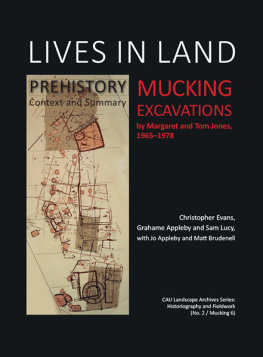Bangkok, Thailand & Beyond
Christoper & Lindsey Evans
HUNTER PUBLISHING, INC,
www.hunterpublishing.com
Hunter Publishing, Inc.
All rights reserved. No part of this publication may be reproduced, stored in a retrieval system, or transmitted in any form, or by any means, electronic, mechanical, photocopying, recording, or otherwise, without the written permission of the publisher.
This guide focuses on recreational activities. As all such activities contain elements of risk, the publisher, author, affiliated individuals and companies disclaim responsibility for any injury, harm, or illness that may occur to anyone through, or by use of, the information in this book. Every effort was made to insure the accuracy of information in this book, but the publisher and author do not assume, and hereby disclaim, liability for any loss or damage caused by errors, omissions, misleading information or potential travel problems caused by this guide, even if such errors or omissions result from negligence, accident or any other cause.
Introduction
It only takes a few days in Thailand to understand why this incredible place is the number-one tourist destination in Southeast Asia. As you soak up the complex culture, sample the exquisite cuisine and explore mystic temples or unspoiled islands you cannot fail to experience a dramatic rise in your feel-good factor.
It happens to us every time. This is our seventh visit and the anticipation is as great now as it was the first time we arrived in Bangkok, the nation's capital. On this trip we plan to explore destinations away from the normal tourist areas. And there is added excitement since we are hoping to buy a home and spend even more time here.
Our first trip six years ago was the ideal combination for first-time visitors. We spent four days in the capital and then flew south to the beaches and resorts of Phuket Island. It was this sample that gave us an enormous appetite to see and learn more.
The anticipation of any adventure can be as appealing as the adventure itself. We get tremendous enjoyment from planning and thinking about what lies ahead and fortunately our expectations of a trip to Thailand have always been exceeded by the reality.
A couple of facts before we get started: The country covers 514,000 square kilometers - about twice the size of Wyoming. The population is 62 million, compared to 500,000 people who live in the state of Wyoming. The country is 95% Buddhist, which explains why you will see so many monks in saffron-colored robes. Something you don't see in Wyoming.
The Buddhism they practice here is Theravada Buddhism, an offspring of the ancient Dvarati Buddhism, and it plays a major role in all aspects of Thai life.
Facts & Figures
Exchange Rates
With exchange rates fluctuating every day it is difficult to give costs in currencies other than the Thai Baht. Throughout the guide we have given most of the prices in the currency of Thailand. In our price guides for hotels, however, we have priced accommodation in US dollars since many of the major hotels quote prices on their Websites in US dollars. In June 2005 one US dollar was worth 38 Baht, one euro bought 53 Baht and the UK pound 75 Baht. We find it best to create a simple worksheet giving the various currencies. Once you've established the formulas it is easy to update every few weeks. You may also check current rates at www.exchangerates.com.
Geography
The country has the Andaman Sea on one side and the Gulf of Thailand on the other. It borders on Myanmar, Cambodia, Laos and Malaysia. Border skirmishes are not unknown but normally only last a few days. Less than 4% of the population is Muslim; most of that group lives in the south of the country and there have been problems with demonstrations over neglect and lack of understanding by the Bangkok-based government. The problems are not new. There has been unrest for over 40 years. To date, the fighting has only affected tourism in the far south and the situation is being closely monitored by foreign governments.
Tourism
Modern-day tourism got a shot in the arm back in 1974 when part of the James Bond movie The Man with the Golden Gun was filmed on an island named Ko Ping Kan. The scene featured Roger Moore and Christopher Lee. Today, tourists swarm to be photographed on the spot where the two men faced each other. The island has been renamed James Bond Island and now boasts 52 souvenir shops. More recently, another island was used for the movie The Beach, starring Leonardo DiCaprio. Local conservationists are delighted that access to that island is very difficult and as a result tourist vessels stay away.
- Thailand's Prime Minister, Thaksin Shinawatra, says Thailand should attract 20 million foreign tourists a year to Thailand by 2008. To achieve this he is preparing to spend 40 billion Baht ($1 billion) on promotion.
Climate
If you don't like it hot you have made the wrong decision by coming this far from home. Snow gear is as much use here as an ashtray on a Harley Davidson. Without doubt, the best time to visit the resorts of southern Thailand is between November and March - and this is the most expensive time too - but do not be put off by the rainy season. Climate does vary from north to south (you will find more details about local climate in the destination chapters). Obviously nobody wants to suffer through a typhoon, and fortunately typhoons are very much a rarity in Thailand, but we have spent weeks when it has rained a little every day. Most times we were on the beach and just enjoyed the natural shower. Minutes later we dried off in the sun.
Prices
Where else in the world can two people dine well and walk away with change from $5? And low prices abound everywhere. Obviously, the copies of brand-name products are extremely inexpensive. But everywhere you will find excellent value for money. We do not know of another country that has so many truly luxurious hotels and, here, the finest hotels with their impressive service cost a fraction of what you would pay in other countries. The business hotels in Bangkok and throughout the kingdom are second to none and we know of nowhere in the US or Europe that has the quality of tourist resorts and spas that you will find here. You'll find that the word "wellness" has crept into the dictionary here. Not to content to tack the words "and spa" onto their names, the resorts now have wellness centers and wellness menus.
Public Holidays
Holidays listed without dates are Theravada Buddhist holidays; the date changes from year to year based on the lunar calendar.
January 1 New Year's Day ( Wan Khun Pee Mai)
February Makha Bucha
April 6 Chakri Memorial Day
April 13-15 Thai New Year ( Songkran )
May Visakha Bucha
May 1 Labor Day (bank holiday only)
May 5 Coronation Day
July Khao Phansa
August 12 Mothers' Day/Queen's Birthday ( Wan Mae)
October 23 Chulalongkorn Day ( Wan Piyamharat)
December 5 Fathers' Day/King's Birthday ( Wan Pot)
December 10 Constitution Day
December 31 New Year's Eve ( Wan Sin Pee)
Practicalities
Visas & Immigration Laws
On arrival you will be granted a visa for 30 days. On one trip we planned to stay longer and we explained that to the immigration officer. He smiled and said yes, as is the custom for those not speaking much English, and we assumed all was well. It was not. On departure we were fined for each day we had stayed over the one-month limit. We were not alone; there was a line of offenders waiting when we went to pay for our error. And to aid those, like us, who had let their supply of Thai Baht dwindle, there was an ATM close by. On subsequent extended stays we resolved the problem by making a visit to the local immigration office and having additional time granted. You can also leave the country and re-enter, whereupon you'll get an additional 30-day visa; on one occasion we made a trip to Singapore, which gave us an extension. If you are planning a longer-than-30-day visit it is worth checking with a Thai embassy for details about various visas that are available. The regulations do change.

















